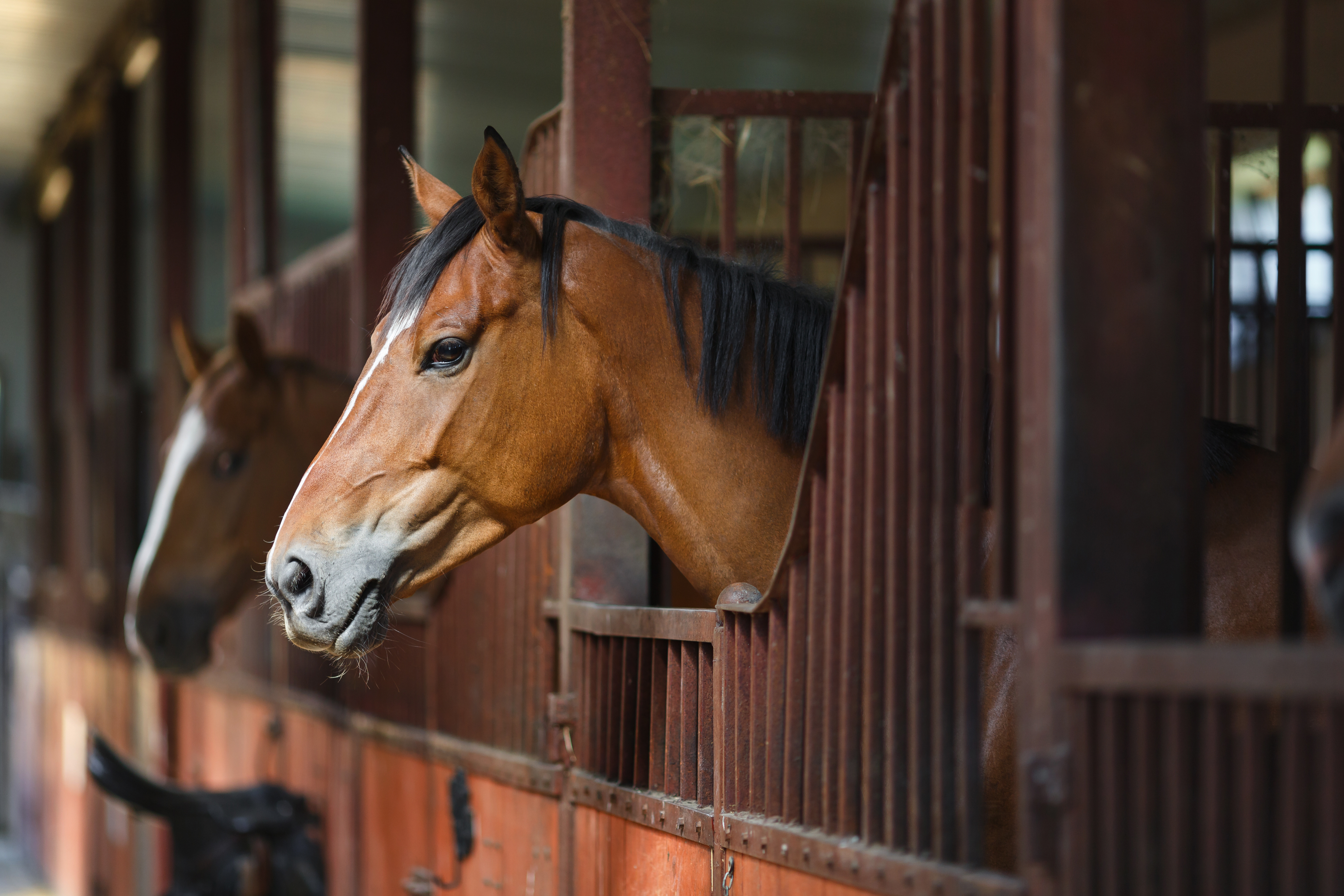How to stop stall weaving
- May 2, 2024
- ⎯ Editors of EQUUS
Q: I have adopted an ex-racehorse, who is a real sweetheart. He spends most of his day in a pasture with my other horses, and I bring him in to a stall only for feeding. My concern is that he weaves whenever he is in his stall. Sometimes he will just stand and weave his head back and forth, and sometimes he’ll move his front feet. He even weaves while eating: He grabs a mouthful and walks up and down his stall, then grabs another and keeps walking.
My veterinarian checked him out, and my horse is physically fine. I’ve been told that he weaves out of boredom, but I don’t believe that since he spends so little time in his stall. I would love some advice on how to stop this behavior.
Name withheld by request
Our expert responds:

A: Weaving is a stereotypy, which is a repetitive, compulsive behavior that serves no purpose. A weaving horse stands shifting his weight from one front foot to the other, while moving his head and neck back and forth. A horse who compulsively walks up and down his stall is called a stall walker. Some horses may also compulsively walk the fence line while turned out.
Many people think these behaviors are caused by boredom, but that is unlikely. What could be more boring than walking slowly across a field taking a few bites of grass every few steps? Yet that is how horses most like to spend their time. What they don’t like is solitude. Horses, as you know, are herd animals, and when they are separated from other horses they are worried that the puma or the wolf will eat them. Their natural response is to move away from danger, and weaving is an escape behavior. The horse is actually walking in place.
I’m guessing your horse probably weaves at the door of his stall—the door is his escape route. I have never seen a horse weave with his rump toward the stall door. Your horse seems to be grazing in that he weaves a few times then takes a bite of food then weaves, then repeats the process, just as he would if he were on pasture.
[Click here to read about the scientific link between weaving and colic]
Solutions for stall weaving
The easiest way to curb this behavior is to avoid confining your horse to a stall, even for his meals. You might be able to feed your horses on pasture if the buckets can be placed far enough apart or if the horses can be tethered while eating their grain.
If you must bring your horse into a stall at feeding time, you can try some other strategies to curb the weaving. Letting him see other horses will help, so give him a stall with windows looking out at other herd members. A view of horses on pasture seems to calm a horse more than the sight of another horse in a stall.
A mirror may also help. A horse apparently does not recognize himself in a mirror so he thinks there is another horse in his stall even though the reflection does not smell or react like one. For safety, a plastic or metal mirror would be best. if you only have a glass mirror you need to put it behind a screen to prevent breakage. Even posters of horses have been shown to help reduce weaving.
Katherine A. Houpt, VMD, PhD, DACVB
Professor Emeritus, Cornell University
Ithaca, New York
This article first appeared in EQUUS #483








